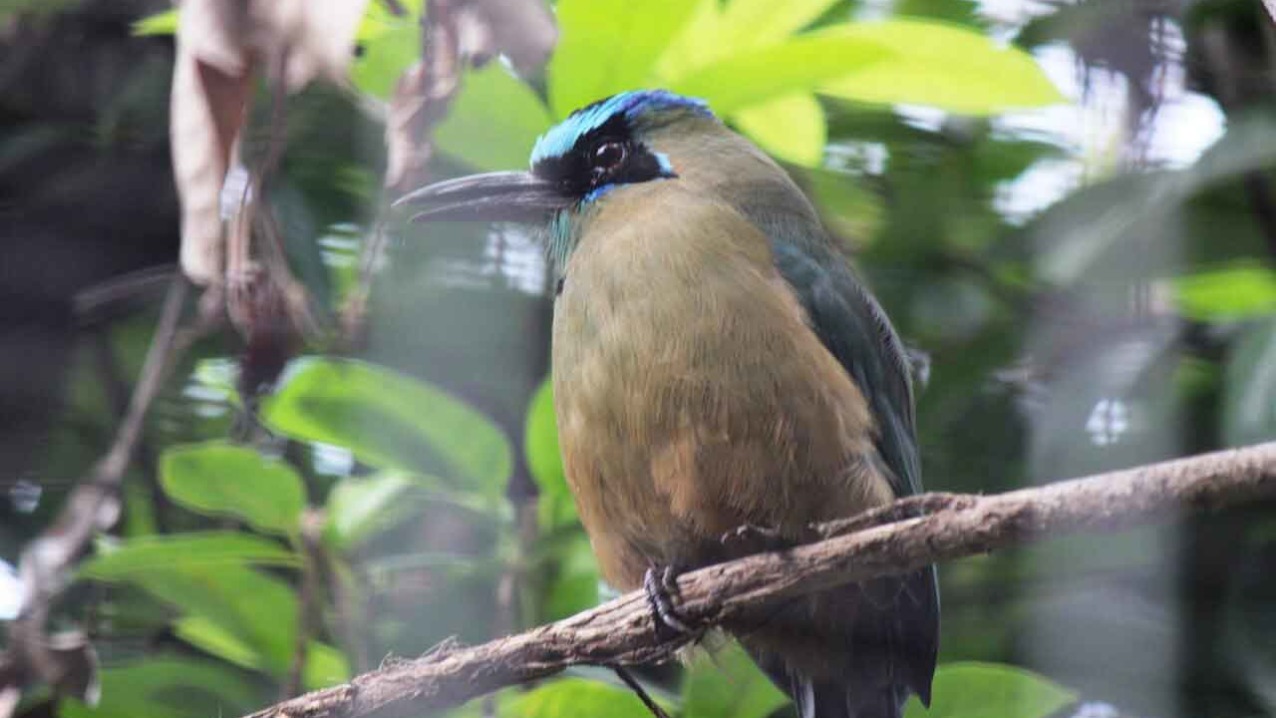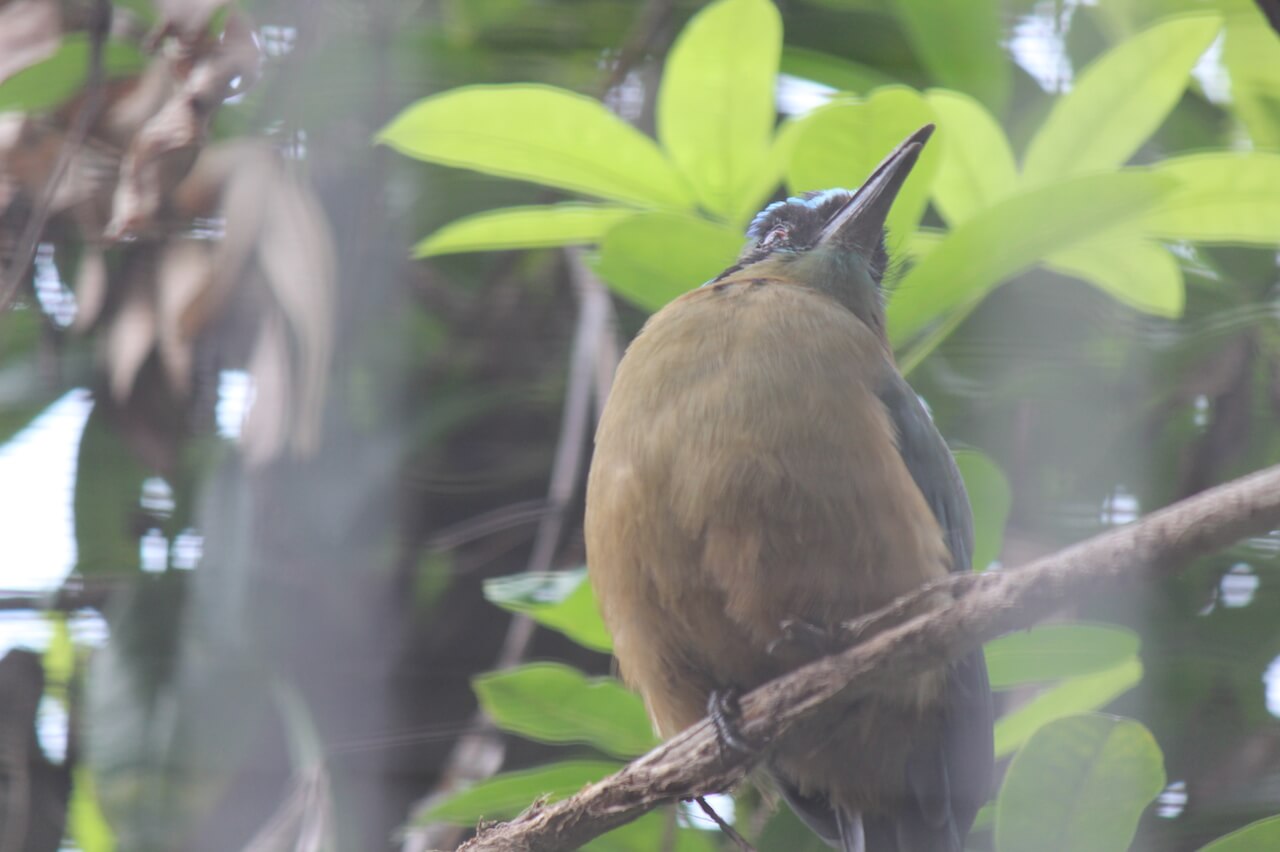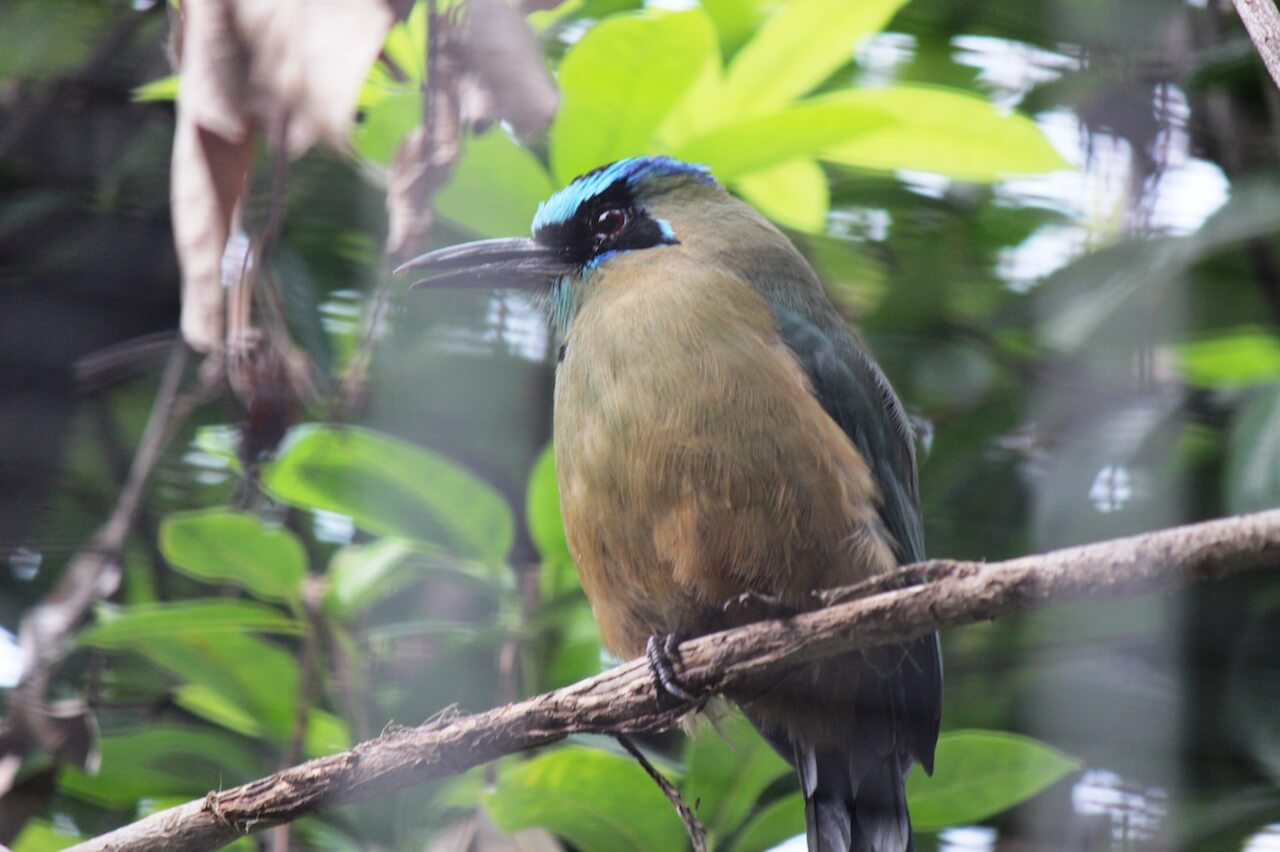momotus momota
Blue Crowned Motmot
About Me
Scientific Name: Momotus momota
Description
This animal can grow over a foot in length! Motmots possess a serrated beak and red eyes, with a black mask that encircles their heads. The overall color of their bodies varies in individuals and ranges from olive to bright green. Their tail feathers and wings, particularly the primaries, are blue-green. It can most easily be distinguished by its two conspicuous tail-feathers that possess blue, paddle-shaped tips.
Fun Facts
- The Blue-crowned Motmot is peculiar as it is active during twilight and will remain active longer than most other bird species in the face of encroaching darkness.
- During the rainy season, pairs will take advantage of the softened mud to excavate their own burrows in tunnels that were already dug by other animals.
- Kingdom: Animalia
- Phylum: Chordata
- Class: Aves
- Order: Coraciiformes
This animal can grow over a foot in length! Motmots possess a serrated beak and red eyes, with a black mask that encircles their heads. The overall color of their bodies varies in individuals and ranges from olive to bright green. Their tailfeathers and wings, particularly the primaries, are blue-green. It can most easily be distinguished by its two conspicuous tail-feathers that possess blue, paddle-shaped tips. This Motmot gets its name from the black mark on its crown that is surrounded by a blue band. In a Mexican morph of this species, the head crown is entirely blue.
These birds are omnivorous, but beetles tend to make up the bulk of their diet.
Blue Crowned Motmots are native to Central and South America. They range from northeaster Mexico down to northwestern Peru, Paraguay, Bolivia, Trinidad, and Argentina. They are an adaptable species that exists it many different habitats.
This bird is peculiar as it is active during twilight and will remain active longer than most other bird species in the face of encroaching darkness. Blue Crowns forage separately during the day, but mated pairs will meet back up in the evenings.
During the rainy season, pairs will take advantage of the softened mud to excavate their own burrows in tunnels that were already dug by other animals. Eggs are laid in these burrows at different times depending on the region. In South America, laying occurs between March and April; in Mexico, between May and June. Both parents take turns incubating the nest, with females usually taking the responsibility at night. After 13-21 days, the eggs hatched and are cared for by the parents for 3-4 days. Afterwards, the chicks are only fed during the day but are otherwise unattended.
The wide range and adaptability of this species makes it a species of Least Concern by the IUCN.
Our Motmot can be seen sharing its exhibit with our Koloa Ducks and Sun Conures in our large, South American aviary.
Other Birds
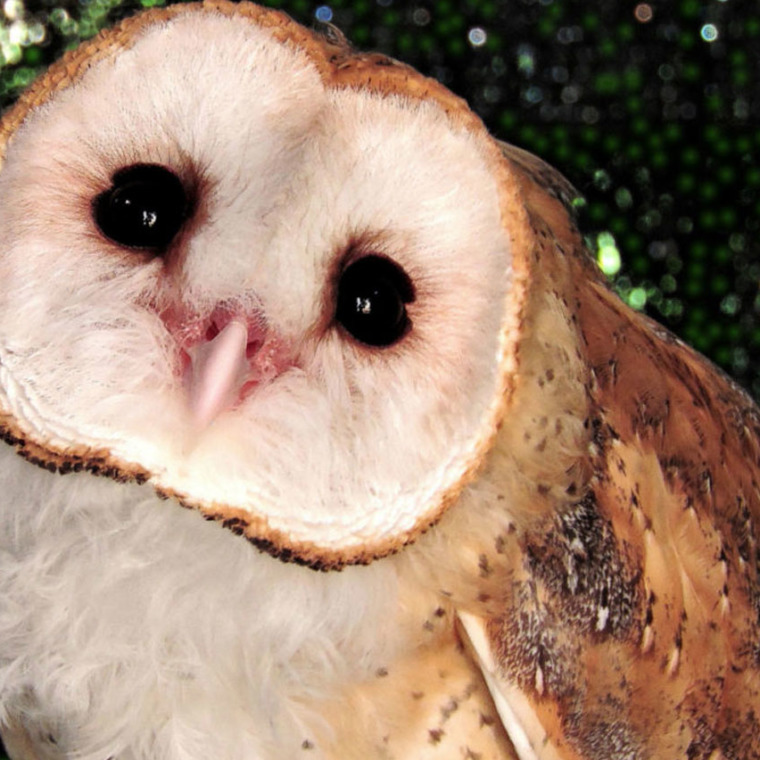
Barn Owls are found throughout the globe, in Europe, Africa, Asia, Austrailia, and the Americas
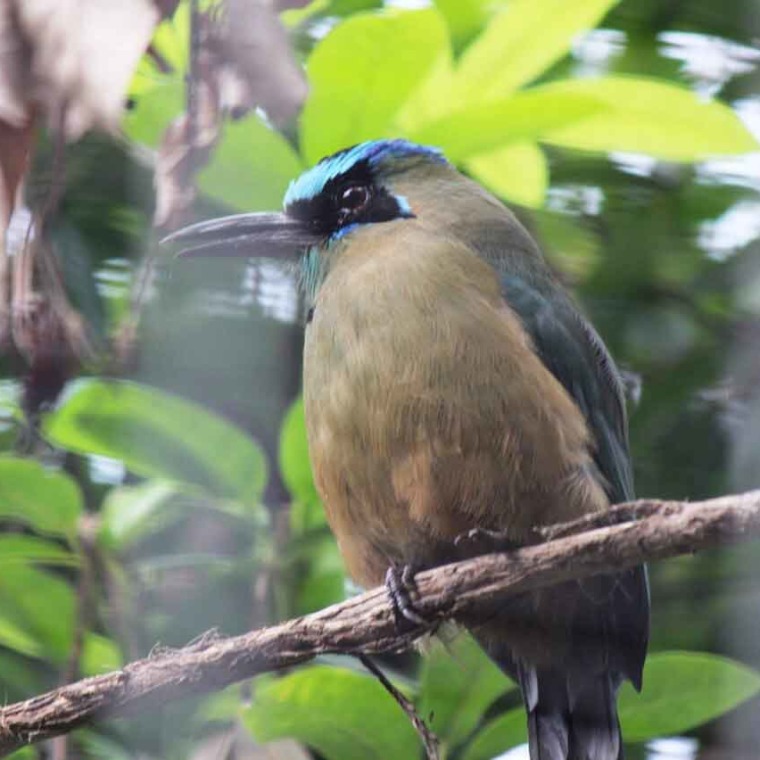
This animal can grow over a foot in length! Motmots possess a serrated beak and red eyes, with a black mask that encircles their heads.
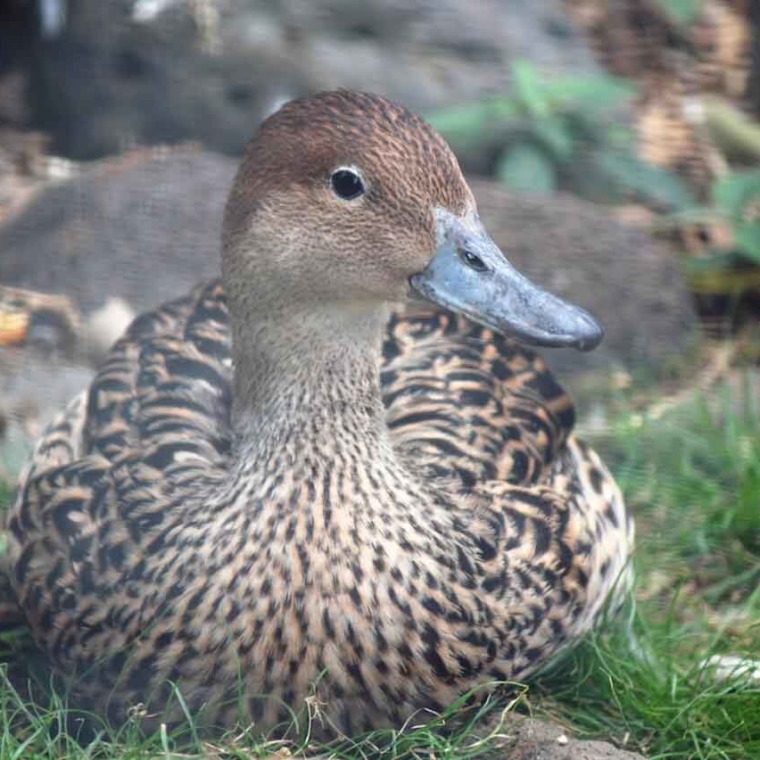
Koloa maoli are very secretive and difficult to observe except in protected areas such as Hanalei National Wildlife Refuge on Kauai.
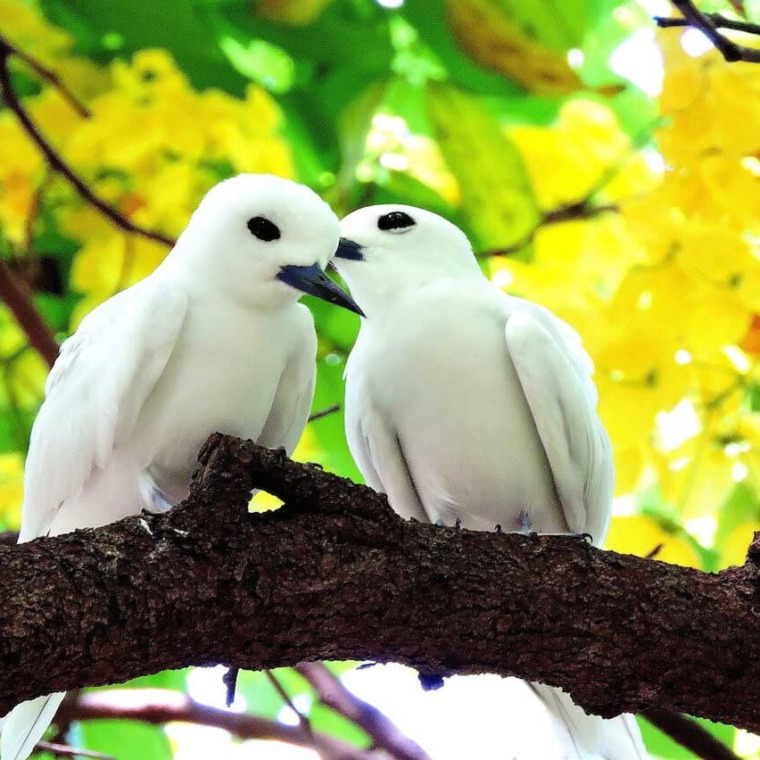
This bird is found primarily on islands, and has a wide ranger across the equatorial band of every ocean on Earth, save for the Arctic Ocean, which does not cross the equator.
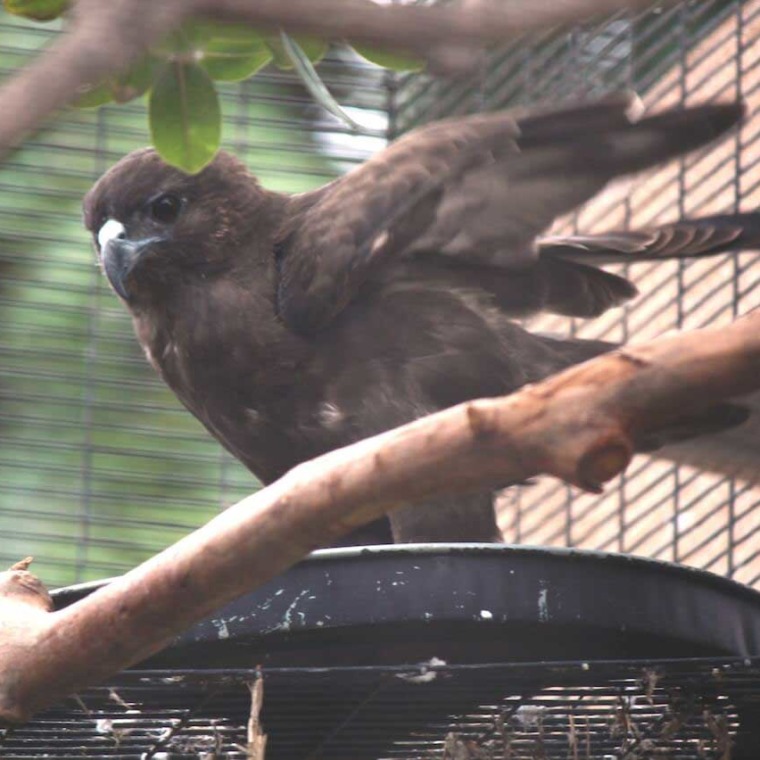
’Io prefer to hunt from tall perches that they use to survey their prey; however, they are known to dive at targets from mid-flight if the opportunity presents itself. are territorial and come together only to breed.


